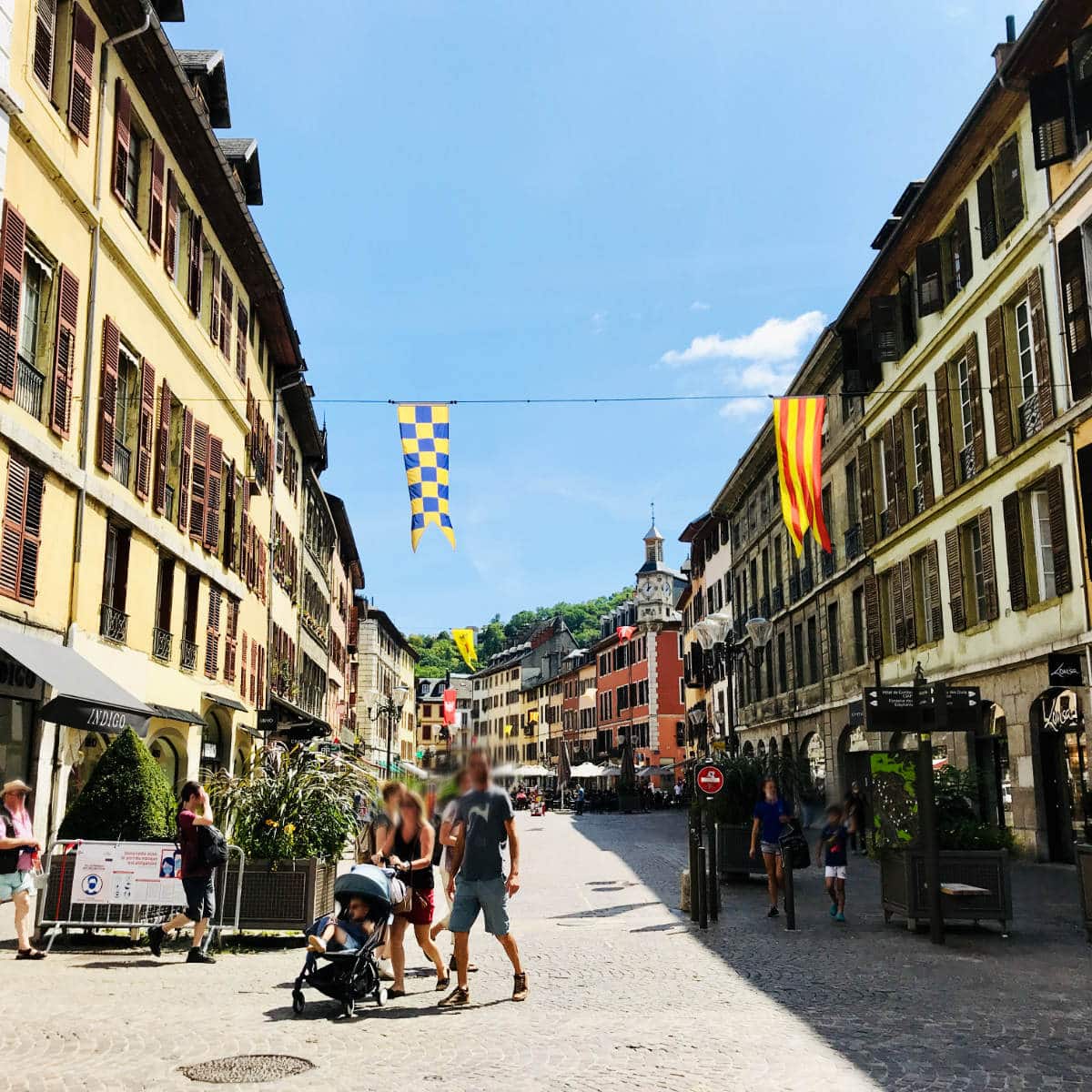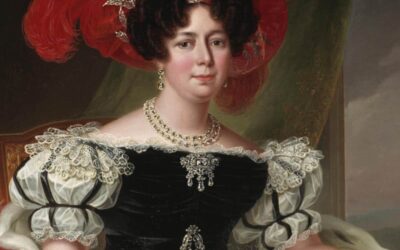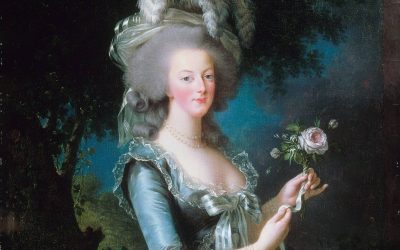Ah, the iconic tricolore flag of France, the “bleu blanc rouge“, which immediately identifiable all around the world. But did you know that France also has a large collection of regional flags?
Basically, there regional flags are like a historical fashion show of medieval duchies and counties. These flags are representative of regional identity, harking back to the days before the country was united.
Historically, as French monarchs played a grand game of territorial conquest and royal matchmaking, the locals were like, “Hold my baguette, we’re keeping our language, flag, and culture, thank you very much!”
And so, these regional flags survived, proudly defying assimilation. Today, these flags still flutter high in the sky, and the French can spot them from a mile away.
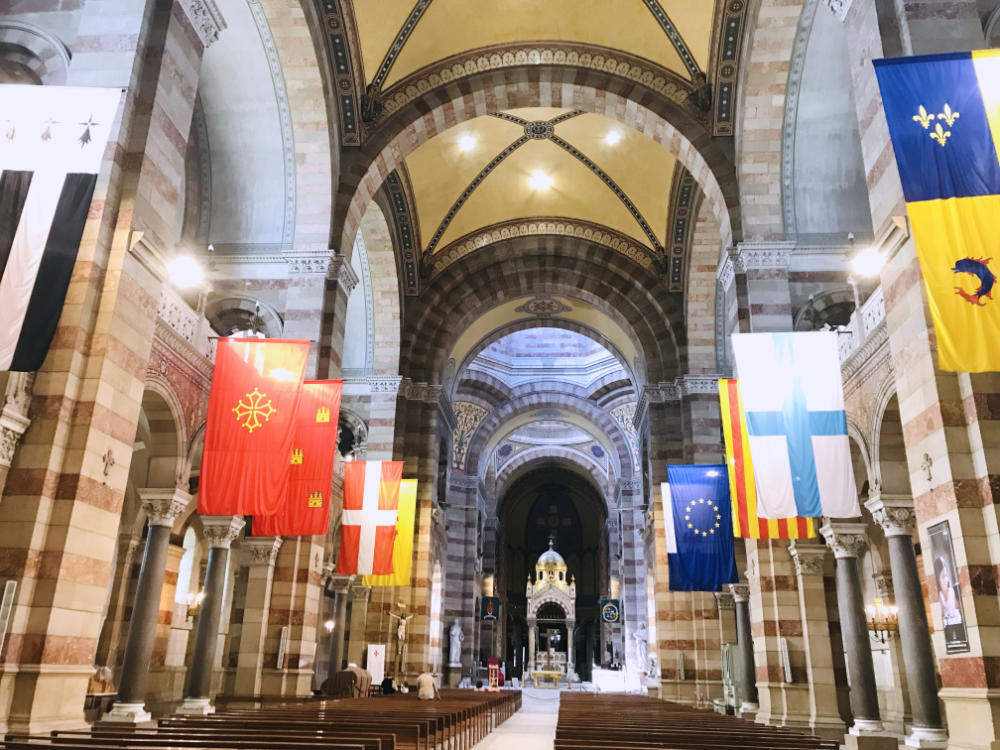
Interestingly, the previous standard royal fleur de lys has been removed from most of the regional flags (after the French Revolution). Other royal links however, do remain.
So let’s explore the most popular regional flags of France and get to know their history, shall we? Allons-y!
1. Brittany
The region of Brittany still vaunts their Gaulish and historical Celtic connections today, with their language Breton and a black and white flag that is called the Gwenn-ha-Du.
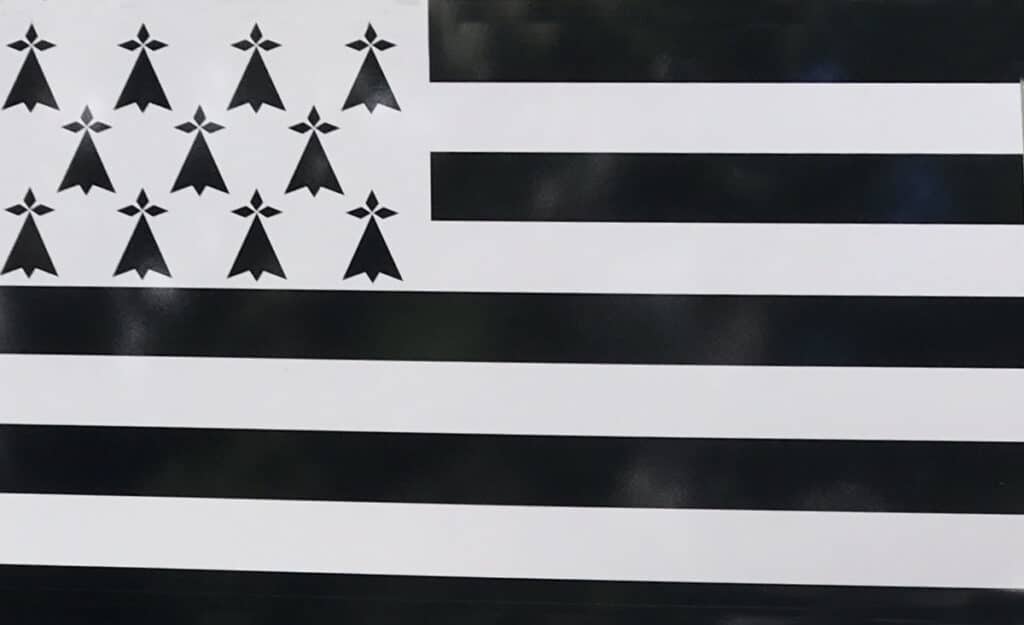
When the Duchess of Brittany, Anne de Bretagne, was forced to marry two French kings in the 16th century, she did not do so willingly.
Throughout her life Anne de Bretagne fought for the rights of Bretons, as its citizens were called. To this day the region of Brittany considers itself a separate entity, paying her tribute.
The current flag of Brittany was designed in 1923 by Morvan Marchal, an activist in the Breton movement for liberty and independence, who was inspired by the American flag and the flags of the age-old rulers of Brittany.
2. Normandy
The region of Normandy has a flag and standard featuring two (or sometimes 3) golden leopards. It is inspired from Old Norse ensignia since this is the area that Rollo the Viking and his followers conquered and settled in.
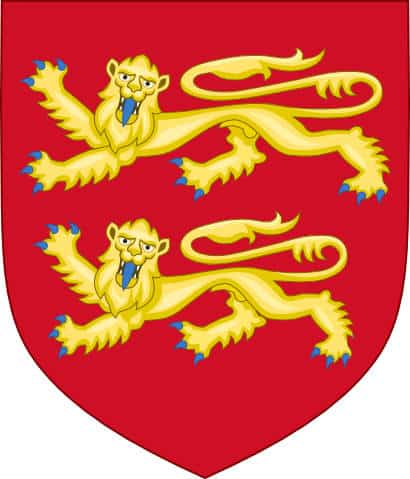
William the Conqueror, a descendant of Rollo, adopted those leopards on his standard.
As William and his Duchy of Normandy descendants made their way across the English channel, today if you look at the Royal standard of the UK, you will notice the same snarling leopards that originated in Normandy.
3. Savoy
The House of Savoie was a royal dynasty and independent country dating back to 1003AD. The city of Chambéry became the capital of the Duchy of Savoy in the middle ages, a designation created by the Holy Roman Empire.
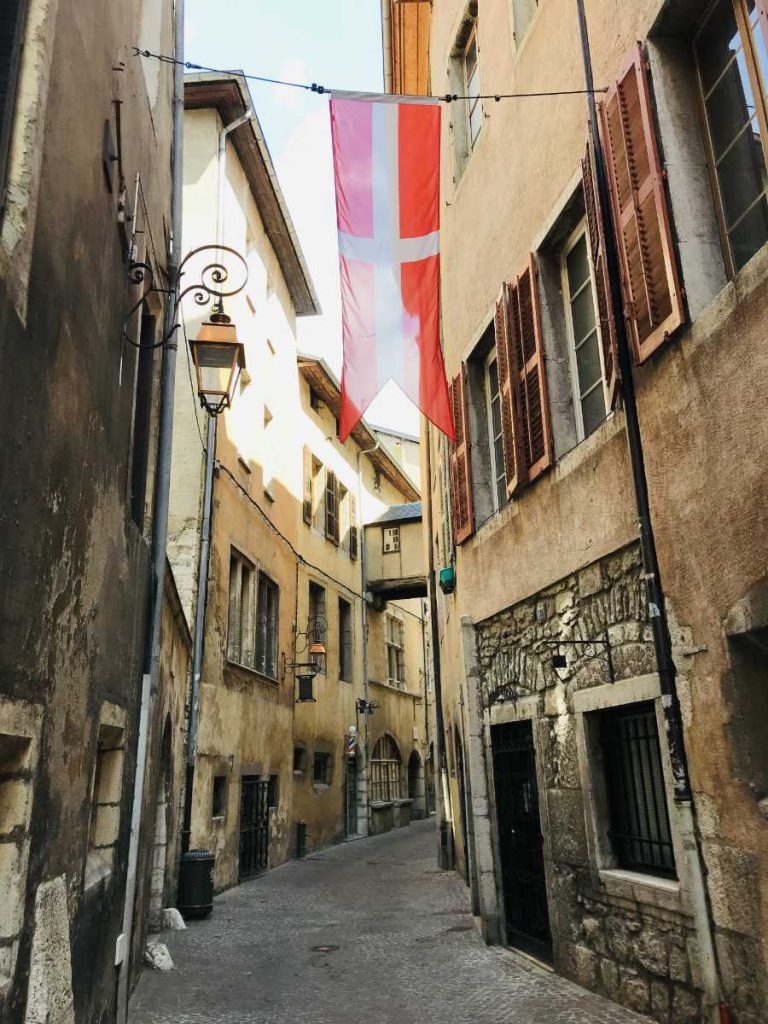
The area remained in disputed for centuries, with the Kingdom of France threatening it on several occasions. (This is the reason nearby Grenoble was so heavily fortified).
The duchy covered much of this area of the Alps until Napoleon Bonaparte decided to annex Savoie in 1792 on his way to conquer Italy. Today, the old flag of Savoy still flies as a regional flag in the city of Chambéry and Annecy, harking back to the duchy.
4. Nice
The city of Nice was also part of the Duchy of Savoy, and also has a flag and coat of arms that shows its allegiance to the House of Savoy.

The eagle head is an imperial emblem, standing over the three hills to show Savoy’s domination over the country around the historical County of Nice. The colors of silver and red is a reference to the colours of the flag of Savoy.
The flag of Nice is particularly popular during football (soccer) games of the local team OGC Nice.
5. Marseille
The city of Marseille has its own flag, which features a blue cross on a white background:

The cross was adopted since at least around 1254, as a symbol of the Crusades since at that time, Marseille was one of the ports of embarkation to go to the Holy Land.
The blue cross flag was flown in the Vieux Port to indicate that this was a safe harbor. The colors of the flag represent the Mediterranean, and also harken back to the colors of ancient Greece to show their roots.
Like the flag of Nice, the Marseille flag is particularly popular during football (soccer) games of the local team Olympique de Marseille.
6. Provence-Alpes-Côte d’Azur
The flag of Provence-Alpes-Côte d’Azur (PACA) is an amalgame of multiple symbols. The left half consists of 9 vertical stripes of yellow and red, representing the historic County of Provence.

On the right are the dolphin of the former province of Dauphiné (whose territory is now divided between PACA and the region Auvergne-Rhône-Alpes) and the eagle of the County of Nice.
7. Corsica
A small island just off of mainland France, Corsica has a flag, culture, and language of its own.
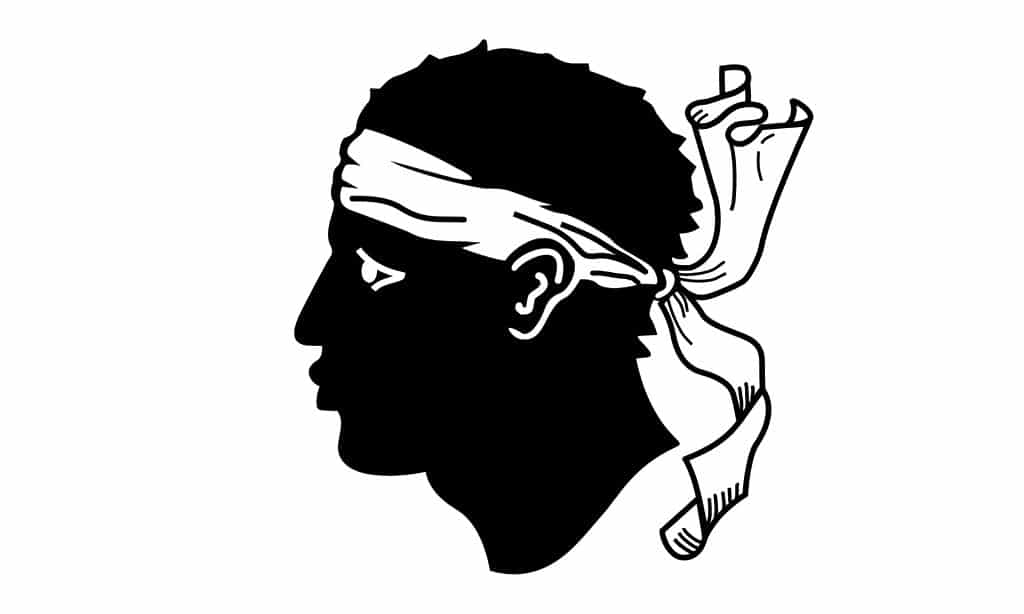
It had been ceded to French King Louis XV by the Republic of Genoa (now part of Italy) to pay off some debts in the year just before Napoleon Bonaparte was born, in 1768.
As such, the island and the Corsican language has maintained its independent nature as it was not the locals who had asked to change countries.
8. Alsace
The flag of Alsace, known locally as “Rot un Wiss” (Red and White), is a symbolic emblem of this region that has been so fought over by France and Germany.
It consists of two prominent horizontal stripes, with red on top and white below.
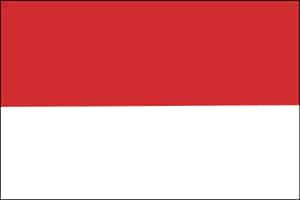
This simple yet powerful design reflects Alsace’s historical connections to to the red and white banner of Gerard, Duke of Lorraine in the 11th century.
However the Rot un Wiss is not recognized by the French government, as some French politicians feel it is related to the German Reich. Thus a new flag has been in place since 2008.
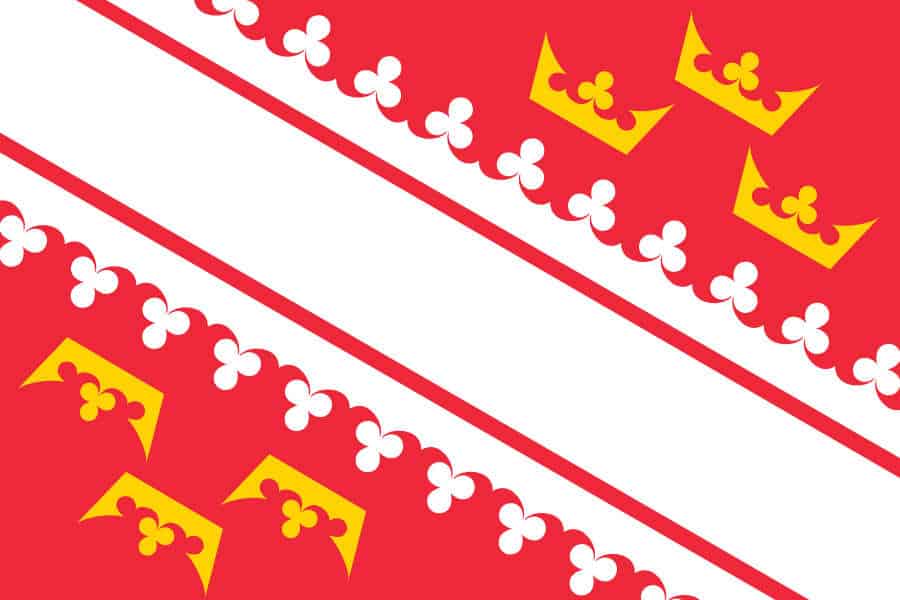
The historical Rot un Wiss is still however used in protests against the government, as a symbol of Alsacian identity.

If you enjoyed this article, you may like to read more facts about France. A bientôt!
